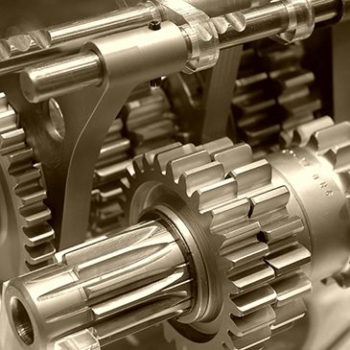Manufacturing companies are always looking for ways to make their operations more efficient. As the economy continues to rebound in the aftermath of the Great Recession, organizations with industrial interests are trying to find ways to maximize profits by streamlining their practices.
Traditionally in manufacturing, wastefulness has been a big problem. However, the issue can be compounded if decision-makers are unable to track down specifically where improvements need to be made in order to eradicate the issue. This lack of knowledge is one of the reasons that enterprise resource planning software has become so popular within the industrial sector. This solution carefully analyzes every area of the business to highlight changes that can be made that will improve both productivity and efficiency.
Big data has become a buzzword across many sectors. This is a concept by which information is broken down in such a way that a decision-maker has a complete and thorough understanding of how a company operates and areas in which changes should be implemented in order to make things better. This is one of the reasons, according to Enterprise Apps Today, why ERP software platforms are being created with business intelligence features that companies can take advantage of almost immediately.
“Business intelligence and analytics features are becoming more of a standard function in ERP systems,” Derek Hitchman, senior partner and solution consultant at SCS Cloud, told the website. “This trend is being driven primarily by executives who are expecting intelligent data from their software that can be used to make decisions rather than simply the raw numbers.”
The common mindset here is that the more information a decision-maker has at his or her disposal, the easier it is to implement solutions that will ultimately contribute to greater revenue being added to the bottom line. This change toward the inclusion of analytics and other advanced statistical data highlights the evolution of ERP software which, at one point, only delivered raw numerical data that had to be interpreted by a third party, such as business intelligence specialist or a data warehouse. Now ERP platforms deliver this functionality as an all-in-one solution.
“Analytics lets you take data from other systems to provide data visualizations, help spot trends and outliers, and even do statistical tests of what you are seeing,” Steve Farr, product marketing manager at Tibco Software, told Enterprise Apps Today. “Previously, many companies wasted a lot of time hunting for insights across siloed departmental databases. So being able to aggregate CRM, accounting, and HR and conduct predictive analytics in one suite is highly convenient and efficient. It’s a function that businesses want, and in most cases need.”
What to look for in an ERP software package
The integration of analytics and other robust data sets is a consideration that decision-makers should have in place when choosing an enterprise resource planning solution that will best benefit the business. But there are others as well.
Manufacturers’ Monthly wrote that the companies that make these software packages are beginning to understand the importance of customizability and ease of use. Because of this, there are a number of options on the market that will fit into any company’s budget while simultaneously delivering results that will be beneficial to the organization.
When choosing an ERP package, the website stated that the more configurable it is, the better. Businesses are always in constant state of change. From one moment to the next, it’s not uncommon for old processes to be discarded in favor of newer ones. In addition to functionalities considered to be standard, such as quality control, regulatory compliance and supply chain management, the software should also allow an organization to implement additional modules that will accommodate any change in business practices.


 USA
USA
 United States
United States Indonesia
Indonesia Mexico
Mexico Australia
Australia United Kingdom
United Kingdom New Zealand
New Zealand Singapore
Singapore